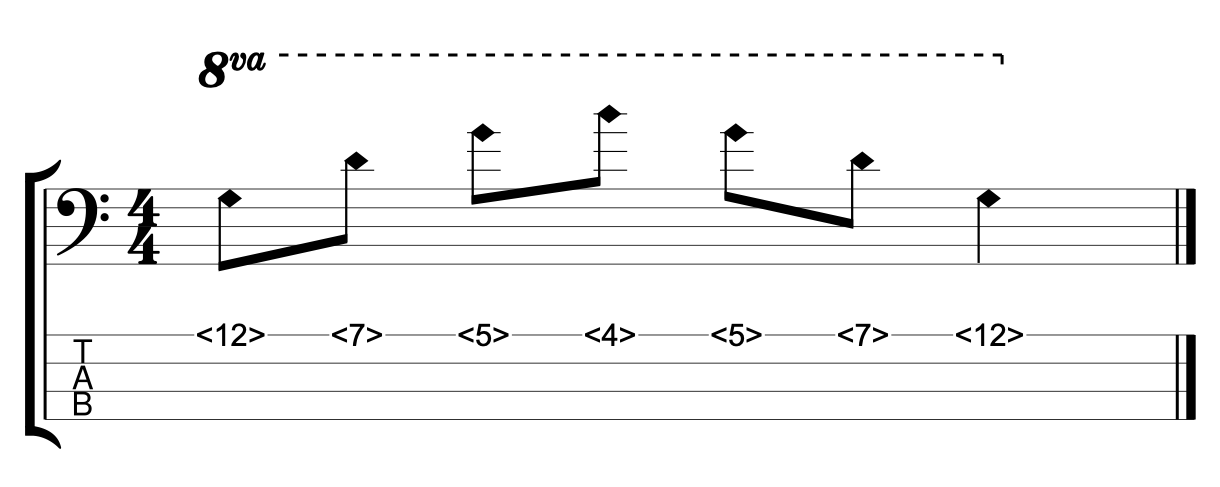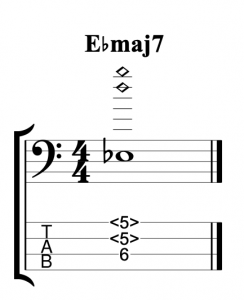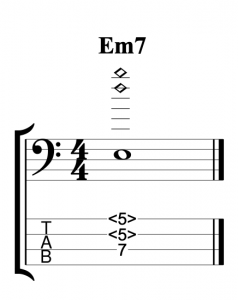Artificial Harmonics – Play Harmonics on Bass Guitar – Part 2 – Bass Practice Diary – 8th January 2019
This is part two of my complete guide to playing harmonics on bass. This week I’m looking at artificial harmonics (find part one about natural harmonics video here).
The term artificial harmonics relates to various techniques where you use your right hand alone to play the harmonics. Artificial harmonics are more difficult to achieve than natural harmonics because you need to do two things at the same time with your right hand. In this post I’m going to look at three different techniques.
The Jaco Pastorius Technique
Many bass players, myself included, discovered artificial harmonics through listening to Jaco Pastorius. I remember as a teenager listening to Weather Report’s tune Birdland and wondering how the introduction could possibly be played on a bass. I was already familiar with natural harmonics. But Jaco seemed to be playing melodies and bending notes with the fluency of a guitar player.
The secret was, that he was using his right-hand thumb to touch the strings lightly, while his right-hand fingers were plucking the notes. And, at the same time, he was fretting notes with his left hand and imitating the phrasing of a guitarist bending strings by sliding the notes on his fretless bass. A lot of things going on at the same time!
It was Jaco’s technique that I was trying to copy when I first started playing artificial harmonics. But that was only until I found a technique which I found worked much better for me and the way I wanted to play. I haven’t used the Jaco technique in well over 10 years now.
The Steve Bailey Technique
After hearing Jaco, the first time that I saw a bass player doing something significantly different with artificial harmonics was on a DVD called Bass Extremes Live.
I’m sure many of you are already familiar with Victor Wooten and Steve Bailey’s incredible bass duets. But at the time I first saw that film, I knew all about Victor Wooten, but I didn’t know Steve Bailey.
Steve Bailey was making incredible arrangements using artificial harmonics on a six string fretless bass. He was playing chords using bass notes and harmonics played simultaneously, which seemed impossible, even to someone who was already well familiar with Jaco Pastorius’ repertoire.
The Steve Bailey technique involves straightening your index finger on your right hand. And using it to lightly touch the string. Then you can use your third finger to pluck the string at the same time. Meanwhile, your right-hand thumb can be used to play bass notes.
Once I’d learned this technique I never went back to the Jaco technique. Because I found that I could play everything that I was doing before with the Steve Bailey technique but I could also play chords using artificial harmonics. I don’t want to get into a debate about which technique is better or worse. We’re all individuals and Jaco’s technique worked for Jaco and Steve Bailey’s technique works for him. And personally I’ve found that Steve Bailey’s technique works for me as well.
My Own Experiments with Artificial Harmonics
Recently I made a video which I called Improvisation on Three Basses. The idea for that video came because I was playing the chords of Miles Davis’ tune Flamenco Sketches using an artificial harmonics technique that I’ve seen used by guitarists like Ted Greene and Tommy Emmanuel. But I’ve never seen it used by a bass player.
I was wondering if I could adapt it to playing chords on a bass guitar. So I tried out playing one of my favourite chord progressions. I was amazed by how well it worked. And it led me to wonder why I haven’t seen it done before.
The technique involves using your index finger to touch the string. Then plucking the same string with your thumb and then using your third finger to play notes on other strings.
Here is the exercise that I wrote and played in the video using this technique.

This is an extended version of the same idea. It uses a chord progression that starts with an Emaj7#11 then F#m11 and G#m11.









